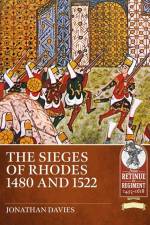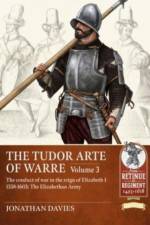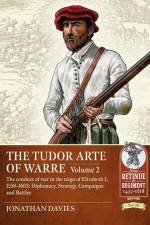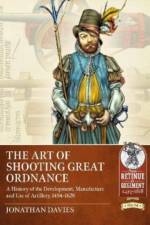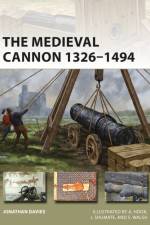av Jonathan Davies
367
Explores the historic sieges of Rhodes in 1480 and 1522 and encompasses tales of heroism and strategic shifts in military history.The Sieges of Rhodes 1480 and 1522 provides accounts of the two epic sieges when the Knight Hospitallers of the Order of St John faced the might of the Ottoman Empire. Photographs and maps included in the book illustrate what a nearly impossible task the Ottomans faced in both sieges. The two sieges illustrate the changes in warfare in the 40 years between them and the revolution in artillery that was taking place during this period. The Sieges of Rhodes contains grand tales of the greatest heroes and the worst of villains, stories of ingenuity, bravery, cruelty and cowardice, tales which echoed across Christendom.When Grand Master Phillipe Villiers de l`Isle-Adam and the few surviving knights and brothers of the Order of St John departed from the port of Rhodes on 1 January 1523, the long history of the Crusades ended.The Order of St John had protected the Latin States for almost 200 years until forced to leave after the fall of Acre in 1291. Unlike the Templars, they survived the disgrace of defeat and re-established themselves on the island of Rhodes. Here they remained a militant presence, always a challenge to the power of Islam and hopeful of reclaiming the Holy Land. The rise of Ottoman power in the mid-fifteenth century led to two great sieges, the first in 1480 during the reign of the Sultan Mehmed II and the second in 1522 by Sultan Suleiman the Magnificent.Both sieges were epic in their character and scale and added to the fame and prestige of the Hospitallers, and on both occasions the Grand Masters provided inspiration for the garrisons and for Christendom. The sieges occurred at a critical period in Europe's political, religious and military history. In 1480, Christendom was united, and both the means of attack and the forms of defense were fundamentally late-medieval in nature - both sides even built trebuchets, which had been thought long obsolete. In 1522, Europe was deeply divided, and the weapons and fortifications had dramatically changed. This book considers the medieval fortifications and their transformation in the intervening years, according to the most up-to-date ideas. It also outlines the artillery revolution that occurred over the same period, with the massive, clumsy, but still powerful, stone-throwing bombards giving way to narrow-bore, cast bronze pieces firing iron projectiles at much higher velocities with significantly greater effect.The sieges are also of great technical interest to military historians because of the extensive use of pyrotechnics and mining. Fire was an especially horrible addition to the Hospitallers' arsenal, and the book summarizes the flame weapons that were available and how they were used. The mining and countermining that took place in the second siege was an epic in its own right. Recent groundbreaking research has highlighted why the war underground was so extensive and became the most effective Ottoman strategy.The soldiers that faced each other were utterly unlike one another in arms, armor and tactics, although similar in their disparate religious devotion. What effect did this have on the outcome? The Ottoman army, especially the Janissaries, were the terror of the East and the West, yet they met their match on both occasions. How was it that a vastly numerically inferior force managed to fight their enemy to a standstill? This can only be understood by studying the sieges in detail, which is possible because of the excellent first-hand accounts produced soon after the events themselves. The reader can, therefore, experience the sieges through the words of those who fought in them. The extraordinary survival of Hospitaller armor from Rhodes and the superb collections of Ottoman and Mameluke armor and weapons help illustrate the contrast between these warrior cultures.


